Abstract
The kinetics of degradation of DNA by deoxyribonuclease II have been studied, using the techniques of light scattering, viscosity, and titration. Theoretical equations have been derived for both random and non-random attacks, and all assumptions have been evaluated. It has been shown that these equations permit a valid calculation of the number of polynucleotide strands per molecule. The results have been verified by two independent experimental methods. DNA from proliferating sources was found to be four-stranded; DNA from non-proliferating sources was found to be two-stranded. The implications of these findings are discussed.
Full text
PDF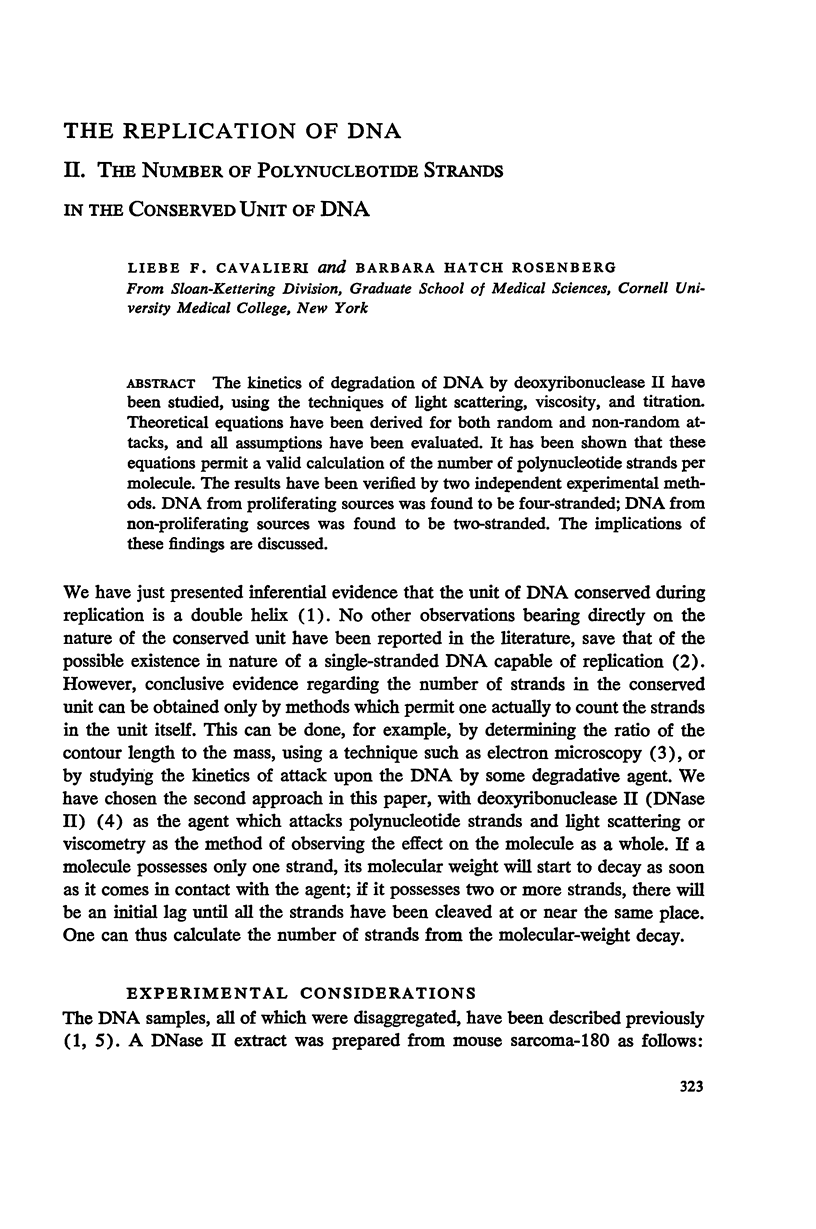
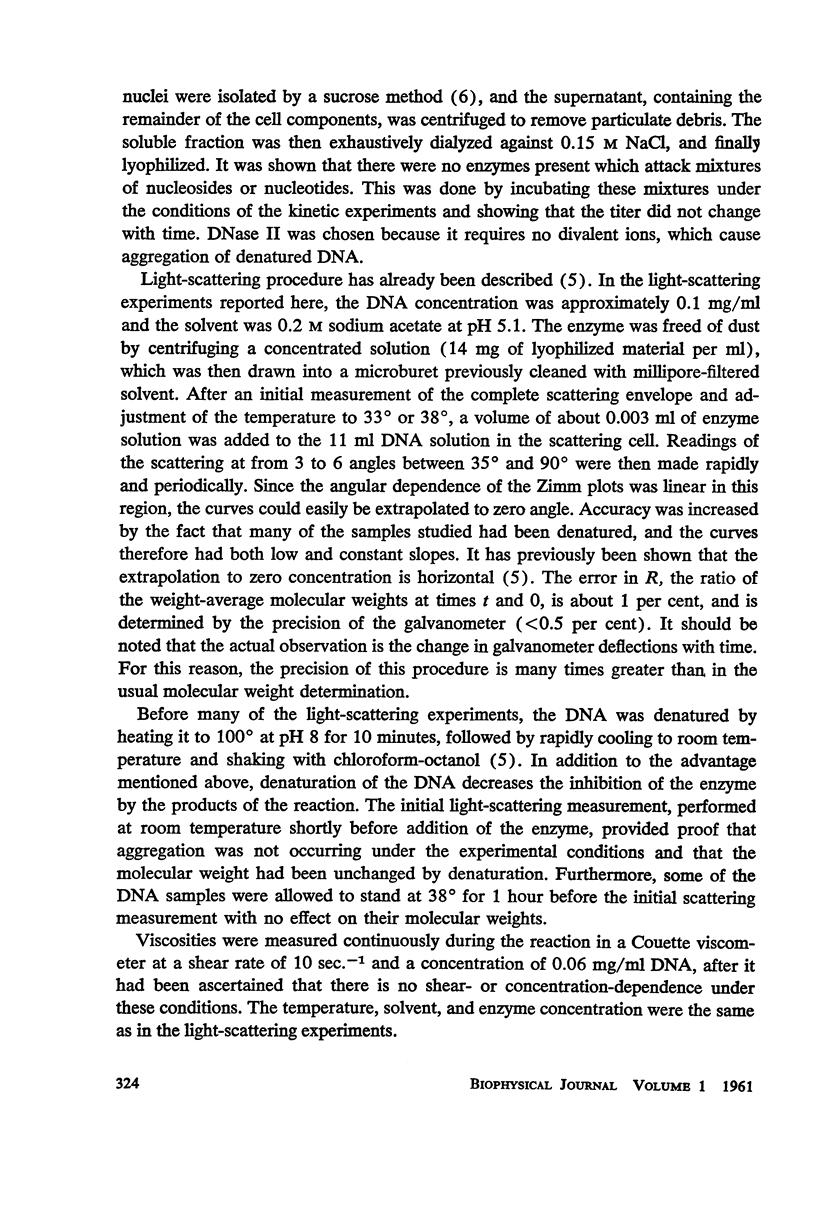
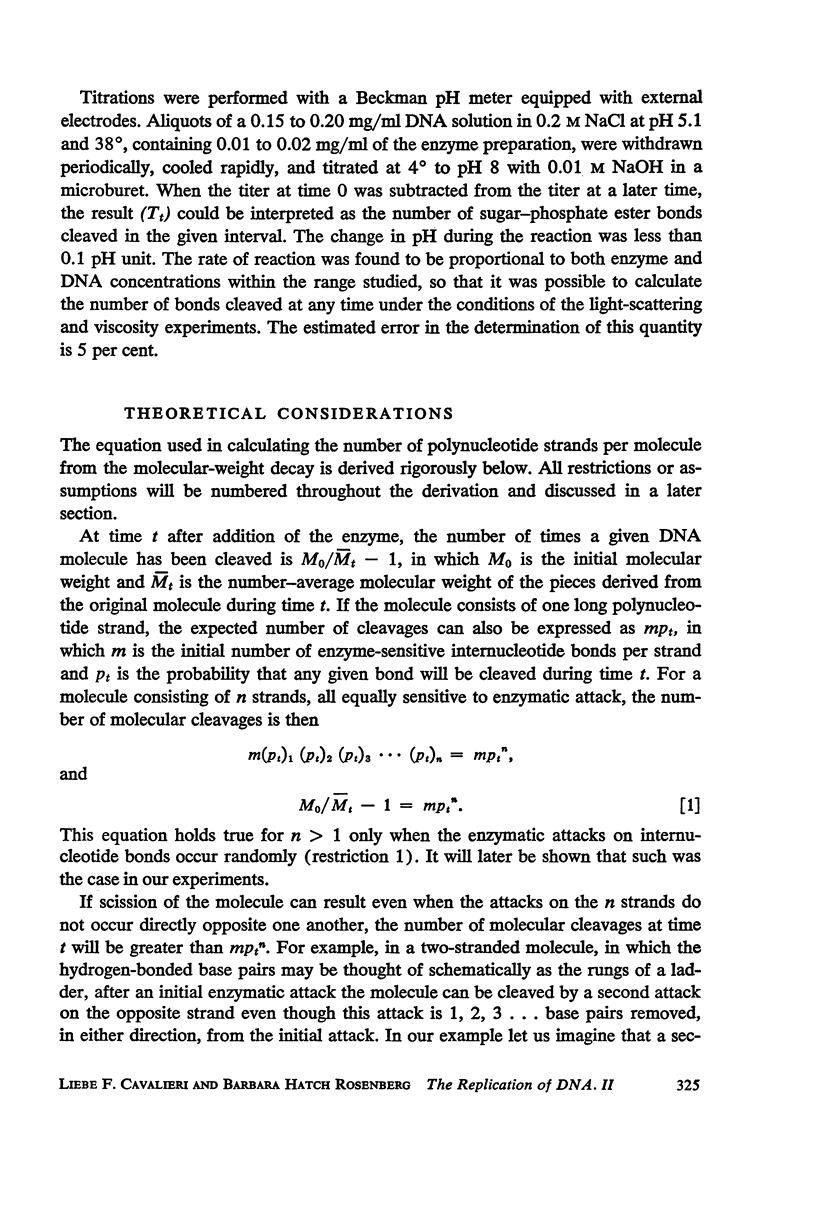
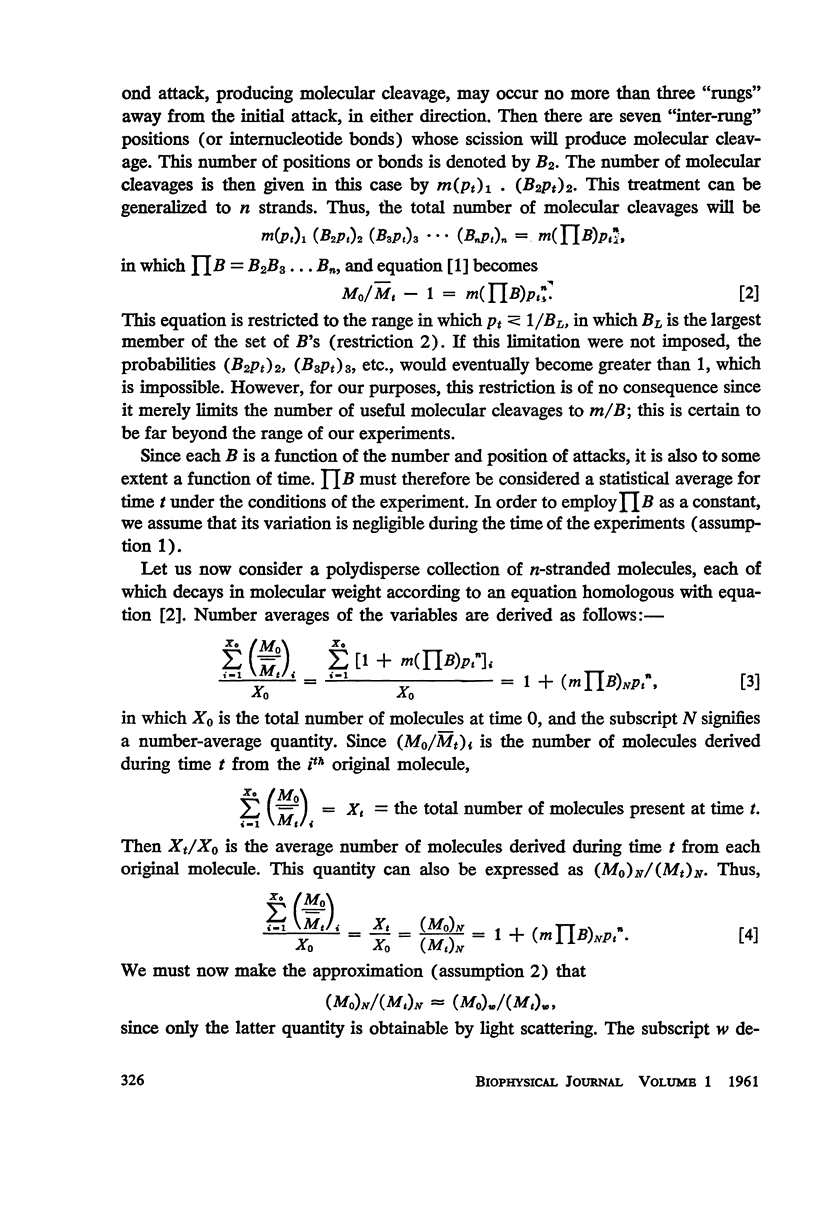
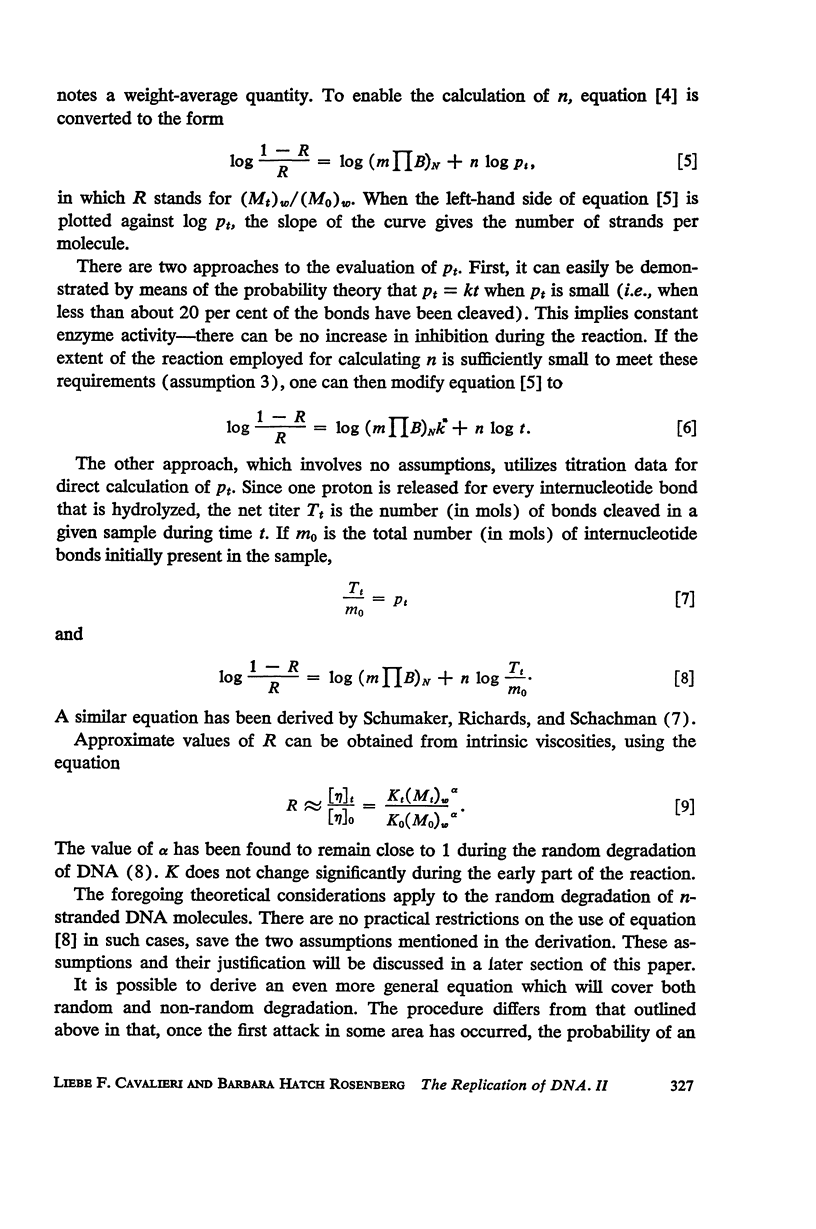
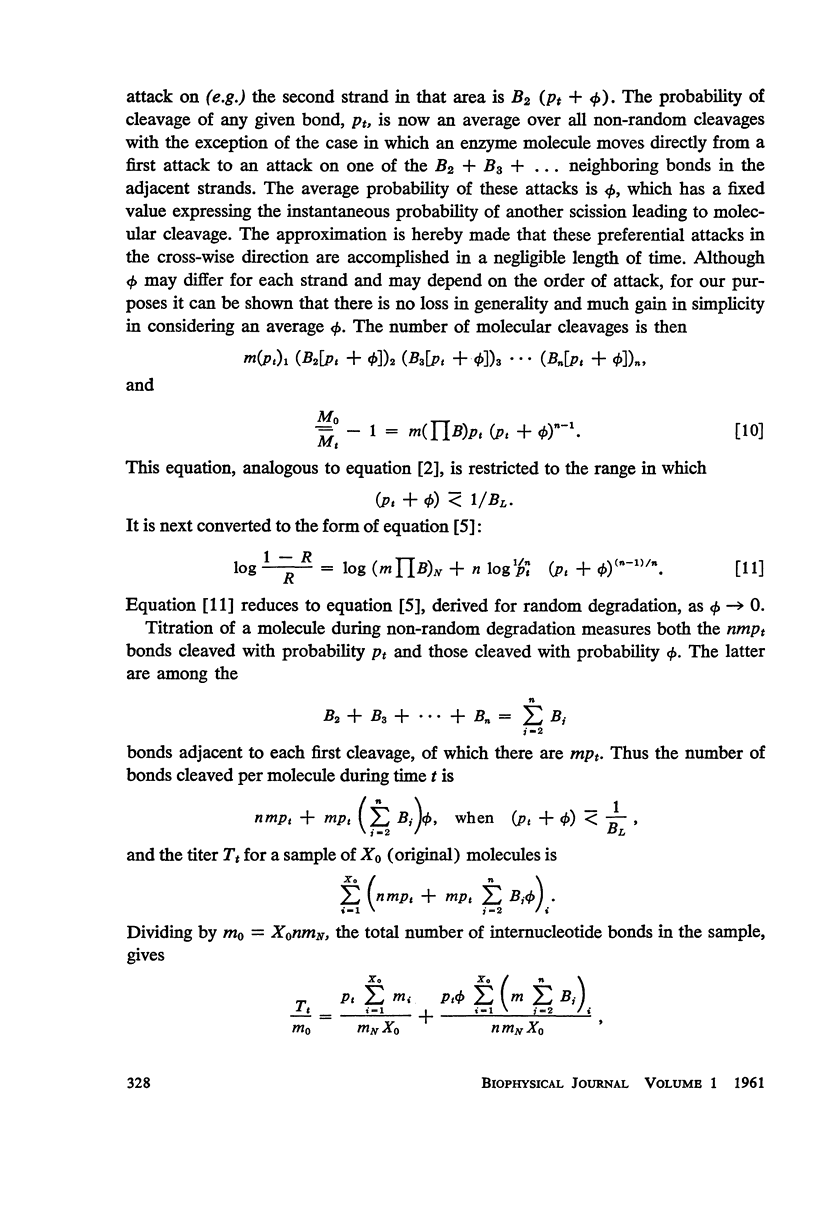
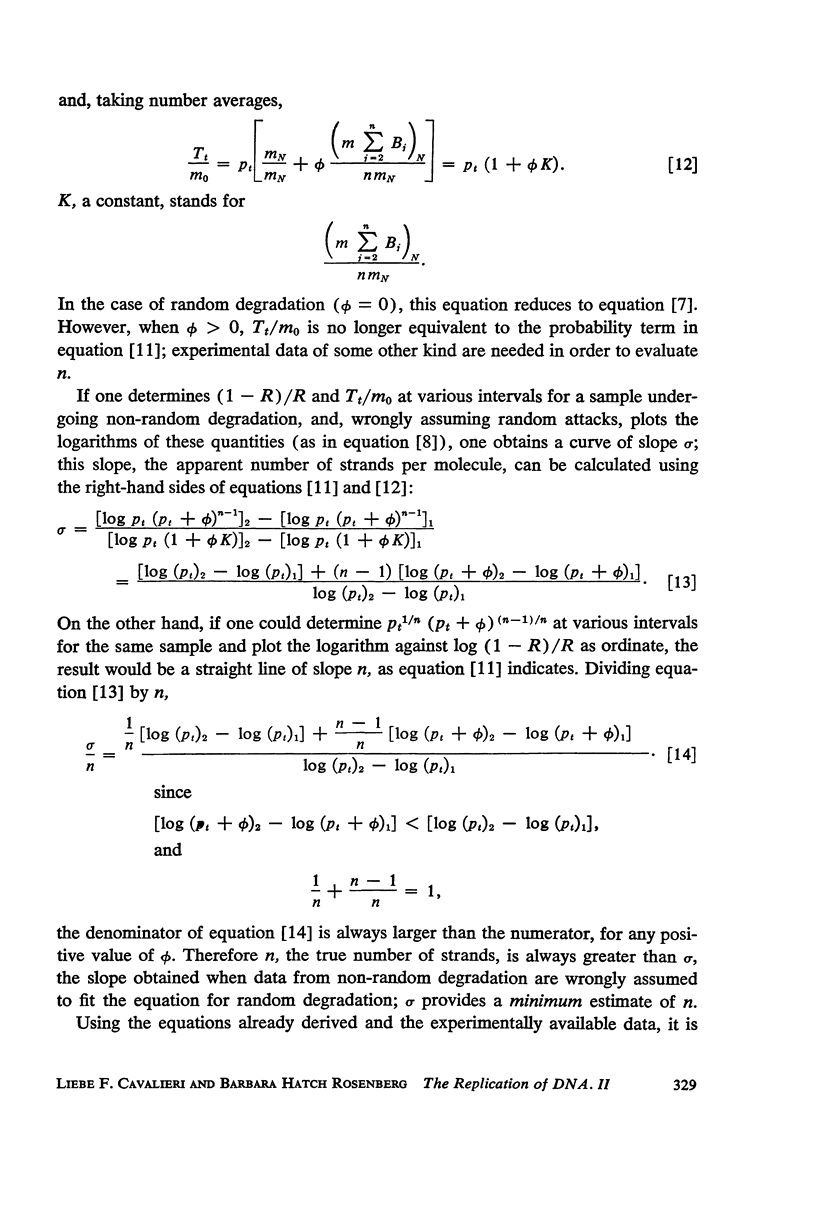
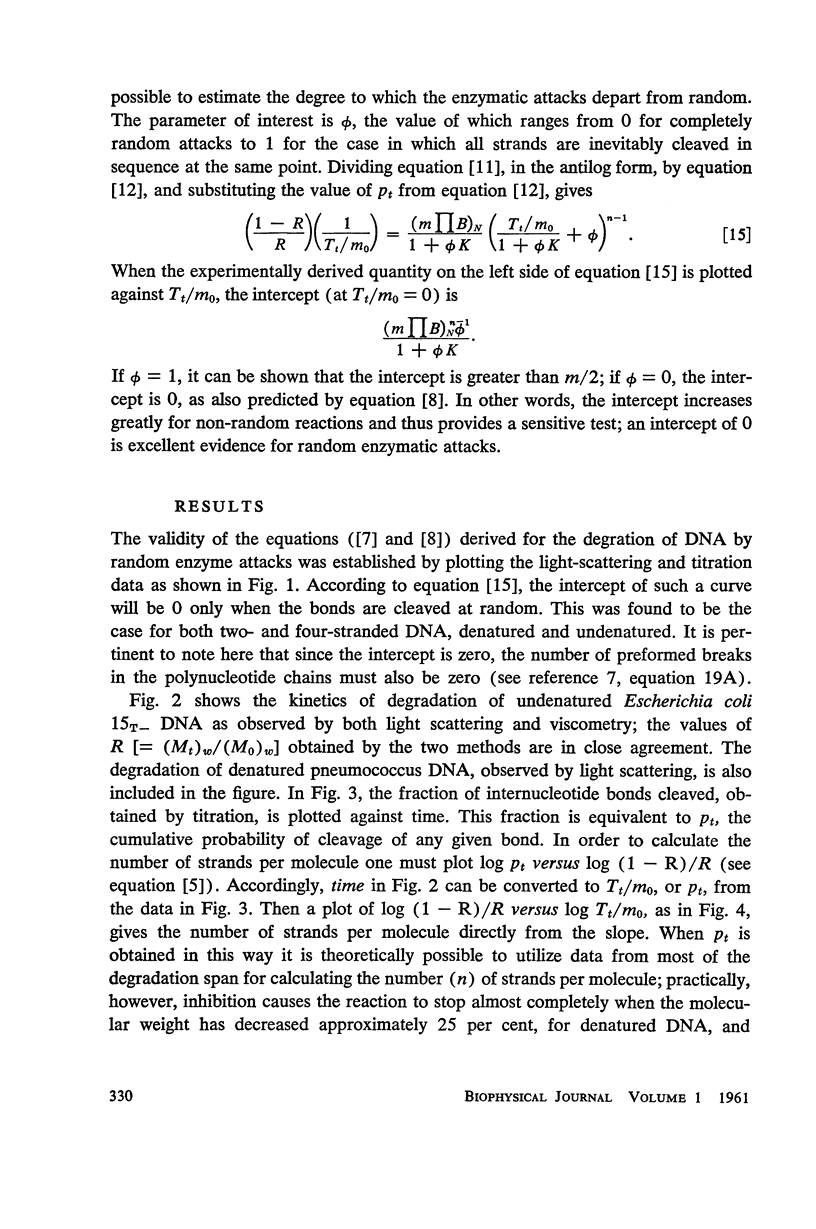
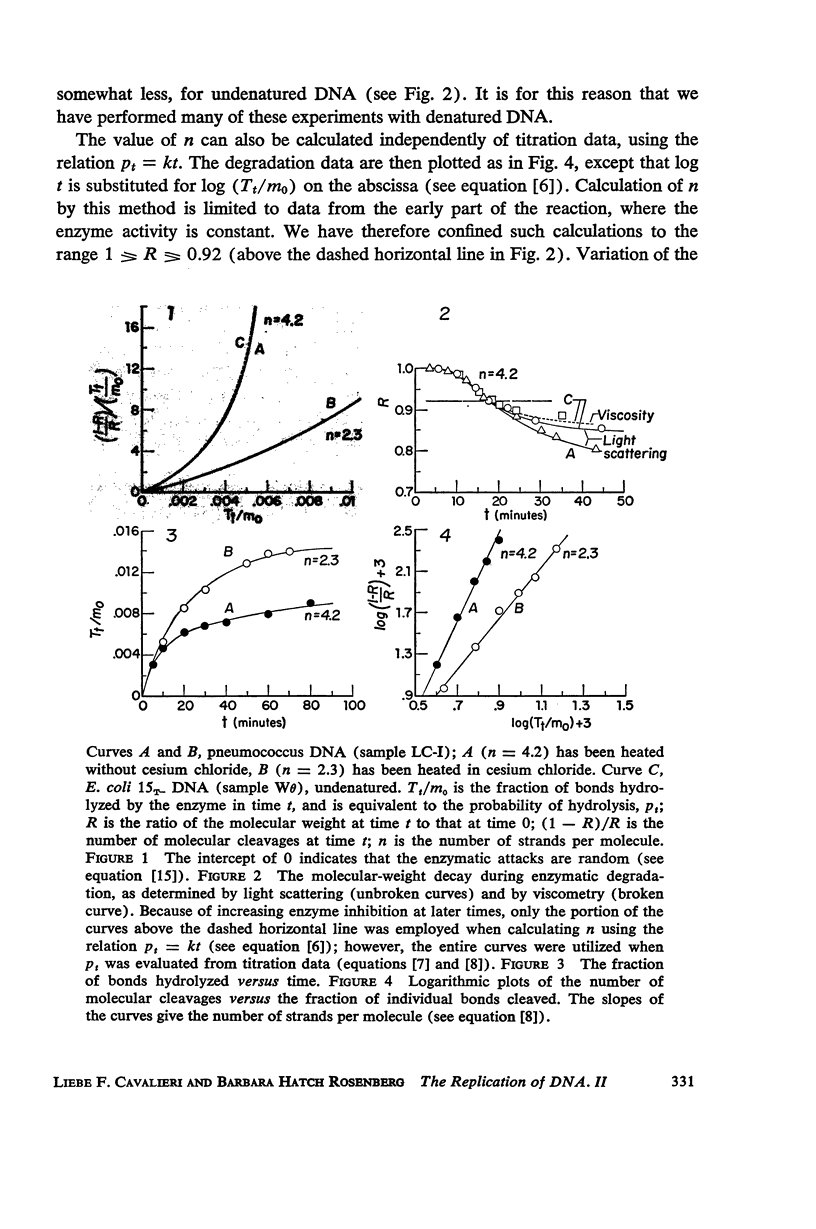

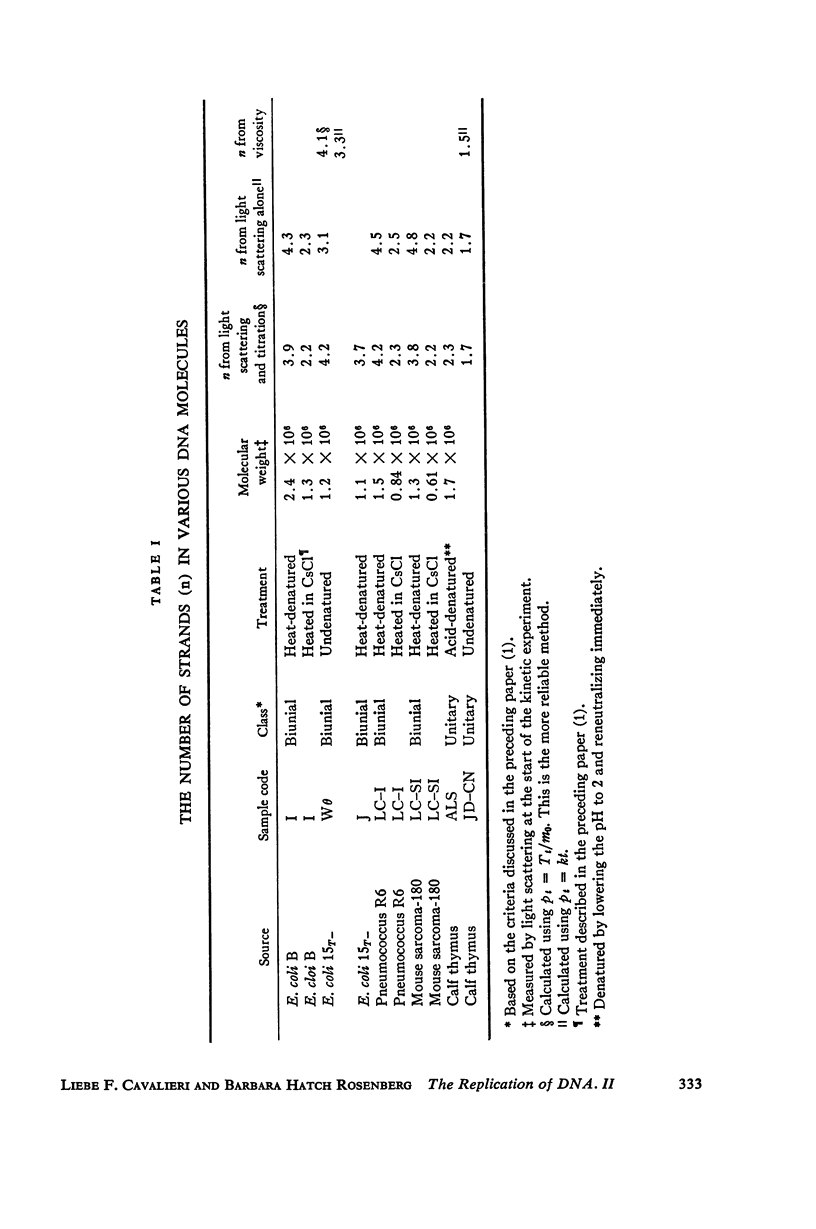
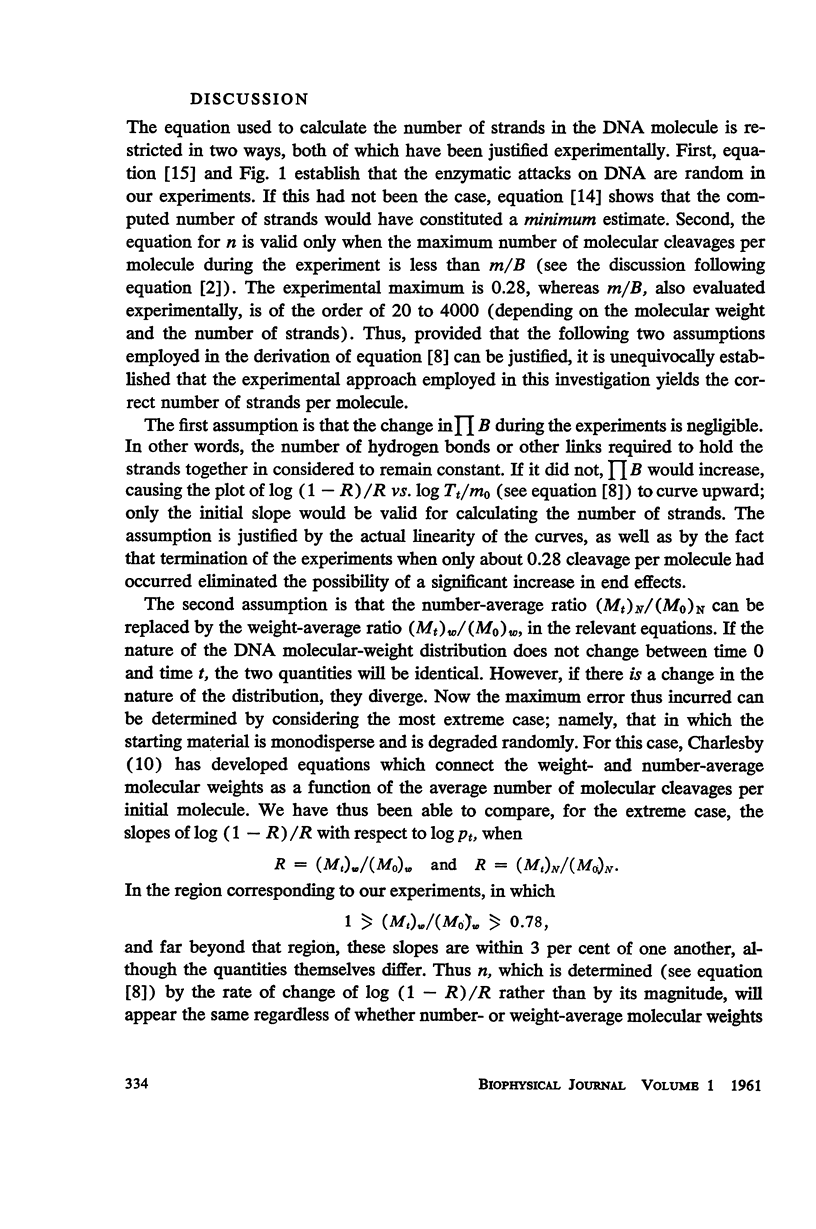
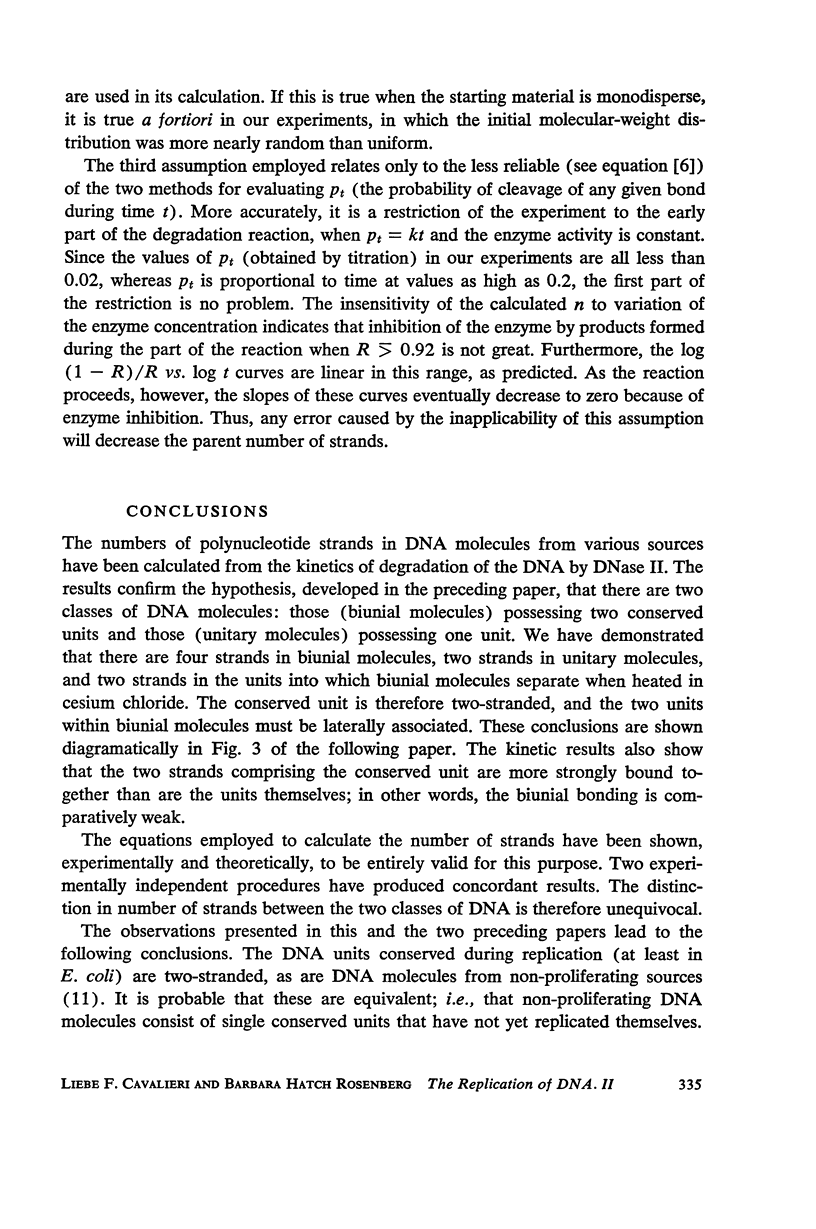
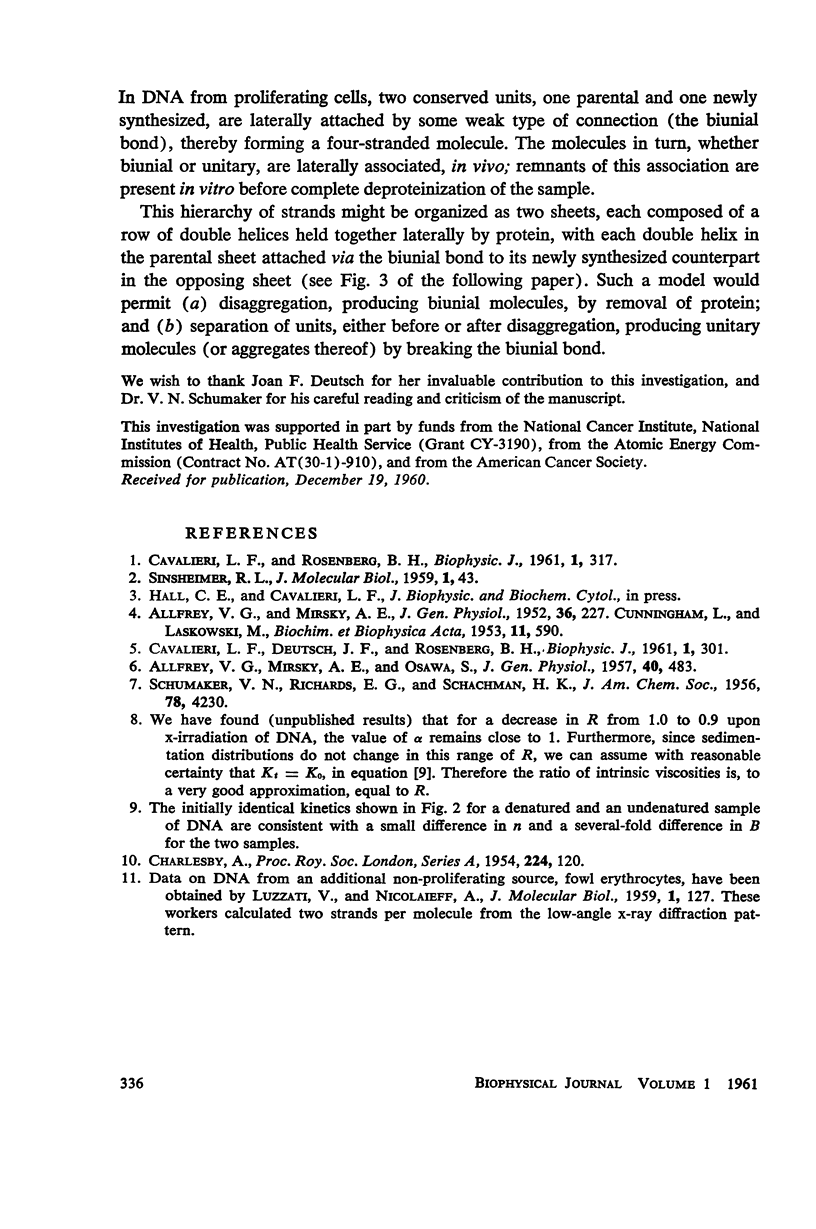
Selected References
These references are in PubMed. This may not be the complete list of references from this article.
- ALLFREY V., MIRSKY A. E. Some aspects of the desoxyribonuclease activities of animal tissues. J Gen Physiol. 1952 Nov;36(2):227–241. doi: 10.1085/jgp.36.2.227. [DOI] [PMC free article] [PubMed] [Google Scholar]
- CUNNINGHAM L., LASKOWSKI M. Presence of two different desoxyribonucleode-polymerases in veal kidney. Biochim Biophys Acta. 1953 Aug;11(4):590–591. doi: 10.1016/0006-3002(53)90104-8. [DOI] [PubMed] [Google Scholar]
- Cavalieri L. F., Deutsch J. F., Rosenberg B. H. The Molecular Weight and Aggregation of DNA. Biophys J. 1961 Mar;1(4):301–315. doi: 10.1016/s0006-3495(61)86890-2. [DOI] [PMC free article] [PubMed] [Google Scholar]


